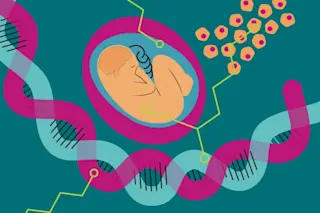This story was originally published in our Nov/Dec 2022 issue as "Growing Pains." Click here to subscribe to read more stories like this one.
Marley’s mother had a relatively normal pregnancy, and her birth went smoothly in 2015. But it was clear almost immediately that “things were not right, and we didn’t know why,” says her mother, Kelly. For starters, Marley couldn’t regulate her body’s temperature or blood sugar levels. She was born with a head full of silver hair, but within a few days it all fell out, chunk by chunk. Later, she grew cysts on her newly-hairless head.
Marley was whisked away to the neonatal intensive care unit (NICU), where she spent the first month of her life. While she was there, doctors found signs that she had suffered cerebral hemorrhages, a type of stroke, on both sides of her brain. Perinatal strokes — strokes that occur late ...















